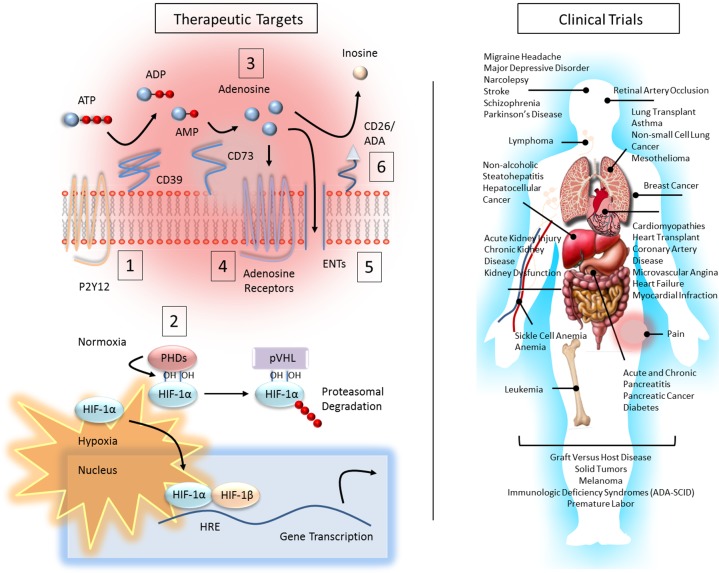Fig. 2.
Therapeutic targets of the adenosine and hypoxia pathways and health conditions and diseases of current clinical trials. Left: multiple drugs exist for targeting adenosine metabolism and signaling and HIF activation. Many are in clinical trials (right panel and Table 1) or in use in preclinical studies. Dampening inflammation and protecting tissues barriers can be achieved by approaches that decrease proinflammatory responses (1), increase extracellular adenosine (2, 3, 5, 6), and increase adenosine signaling (2–6). Examples of drugs and drug targets include 1) Ticagrelor and Clopodogrel, P2Y12 (ATP/ADP receptor) antagonists; 2) DMOG and FG-4497, HIF stabilizers (PHD inhibitors); 3) adenosine and adenosine analogs [e.g., 5′-(N-ethylcarboxamido)], nonselective adenosine receptor agonists; 4) Regadenoson and BAY 60-6583, A2AAR and A2BAR agonists, respectively; 5) dipyridamole, ENT inhibitor; and 6) Pentostatin, ADA inhibitor. Adenosine receptor antagonists (e.g., A2AAR antagonists, PBF-509 and CPI-444) or CD73/CD39 inhibitors (e.g., MEDI9447) are currently in clinical trials in a number of solid tumors and are proposed as anticancer therapies that boost immune responses against tumor cells. On the contrary, Pentostatin, which increases adenosine levels, is currently in clinical trials for different solid tumors, leukemia, and lymphoma. In a similar manner, CF-102 an A3AR agonist has been shown to have therapeutic potential in hepatocellular cancer.

